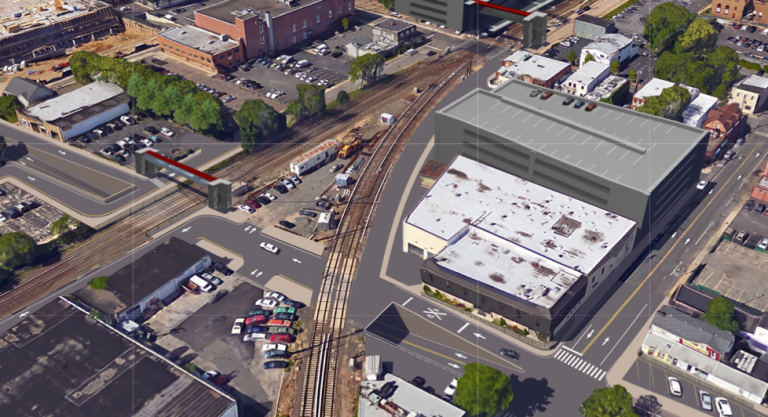
The Long Island Rail Road’s third track project could solve some parking problems for Mineola commuters and downtown businesses.
The LIRR wants to build two parking garages near Mineola’s train station as part of its $2 billion project to add a track to a key 9.8-mile stretch of its Main Line from Floral Park to Hicksville.
One of them would replace a parking lot where a parking study recommended the village build a garage, according to an environmental study of the project.
Mineola Mayor Scott Strauss said that would save the village the cost of building that garage, which the study says is key to the revitalization of the village’s downtown area.
“If they do go through with this, this third track plan, and they do build the parking garages, then hey, that’s an easy win for me,” Strauss said.
The LIRR has proposed building a 424-space parking garage over an existing lot on Second Street between Main Street and Willis Avenue, and a 553-space garage over the lot on Third Avenue between Main Street and Harrison Avenue, according to the third track project’s environmental study.
The village parking study published last month recommended a garage over the latter lot containing at least 425 spaces, one of several measures it suggested to reduce parking congestion and boost business downtown. A garage once stood there but was demolished after it fell into disrepair.
Mineola could have 976 fewer parking spaces than commuter cars near its LIRR station in 2040, given ridership trends and a projected ridership increase resulting from the completion of the East Side Access project to build an LIRR station at Manhattan’s Grand Central Terminal, the third track study says.
The garages would reduce that potential shortfall to 101 spaces, the study says.
The village parking study suggested creating a more expensive commuter-parking permit to partially fund construction of a garage, but the LIRR would pay for the garages if they are built. Commuter permits currently cost $55.
Village officials will plan to build their own garage in case the third track plans do not go through, Strauss said.
They will also have to determine where the 120 cars who park there will go if the garage gets built, regardless of who pays for it, he said.
“It’s like bad medicine — you take it, it stinks while you take it, but at the end you’re much better off,” Strauss said.
No matter which garage gets built, more parking would be a big help to downtown Mineola businesses, said Cathy Monachelli, owner of Eleanor Rigby’s, a restaurant and bar adjacent to the Third Avenue parking lot.
“A lot of our customers call us and tell us that they were planning on coming for lunch and then they left because they couldn’t find a parking spot,” she said.
The additional train capacity the third track will provide and the extra parking will be necessary as more of Mineola’s downtown apartment complexes open, Monachelli said.
Two of the “transit-oriented” buildings targeted at affluent commuters containing nearly 600 apartments are open, and another two containing more than 450 units are slated to be built.
Third track supporters have argued the project would improve train service and spur economic development on Long Island, particularly in places like Mineola with walkable downtown areas.
But opponents worry construction, expected to take three to four years, would hurt quality of life and cause noise and traffic problems in areas near the tracks.
Many Mineola commuters favor the third track, Strauss said, but several residents who live near the railroad are concerned about the potential impact on their properties.
Mineola’s Village Board has yet to decide whether it will support or oppose the project, Strauss said.
“There are pros, there are certainly cons and we need to weigh them all,” he said.






